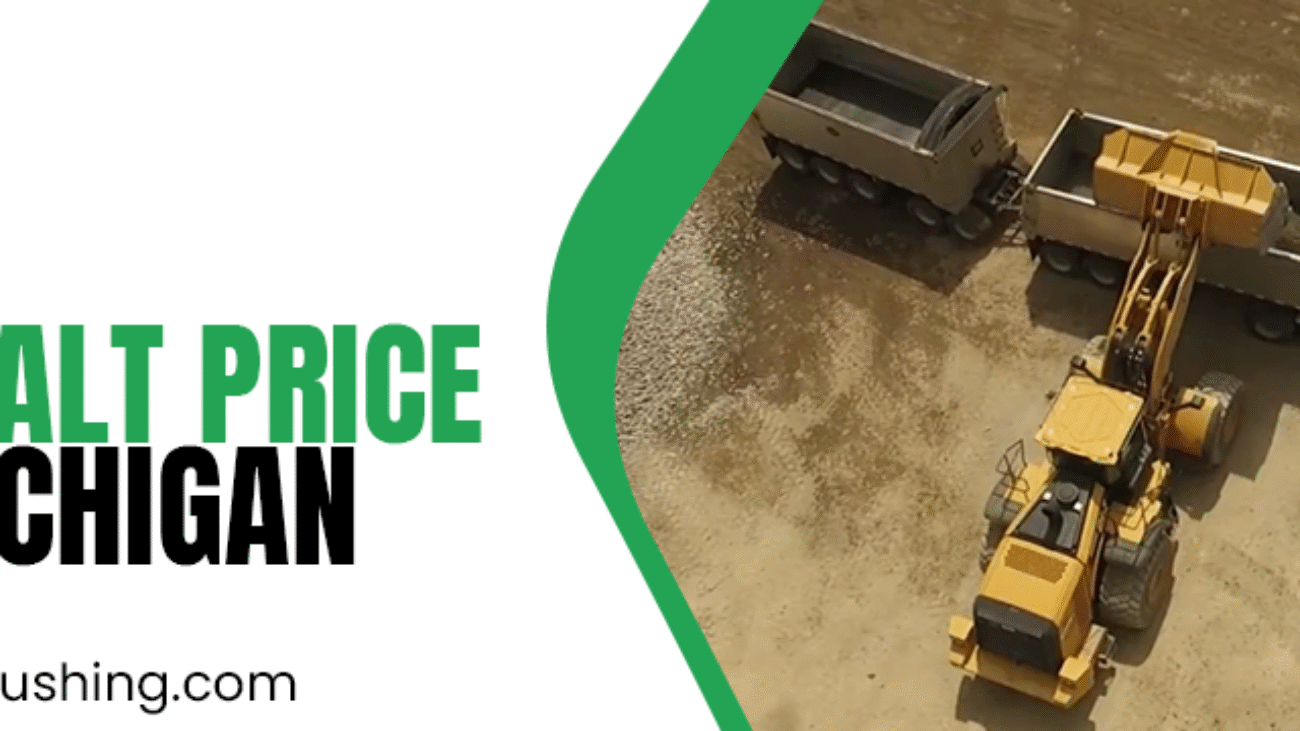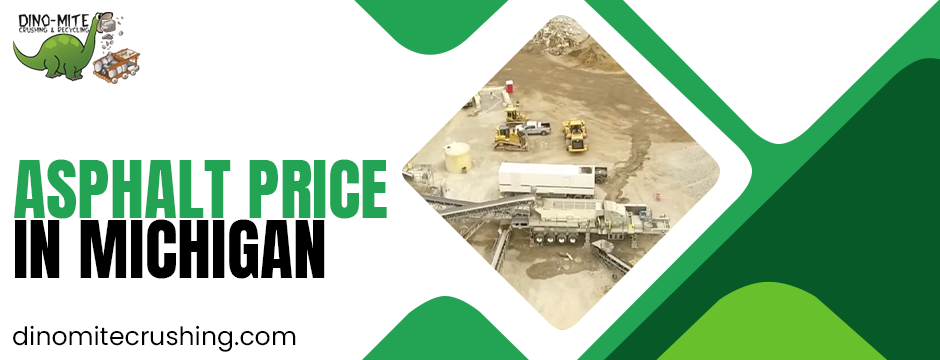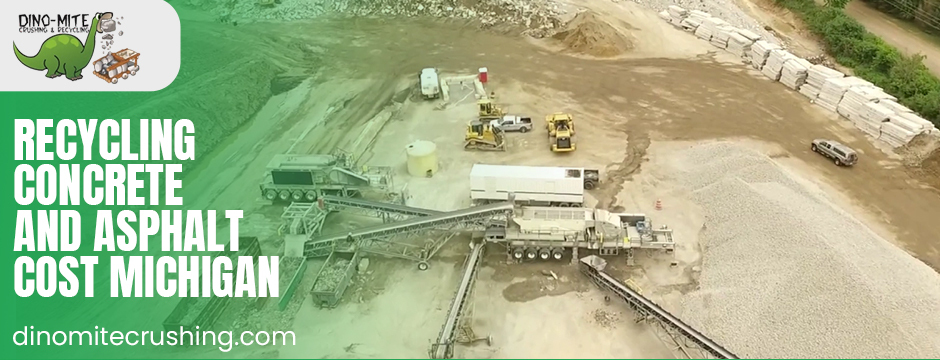If you’ve ever tried getting equipment or materials delivered to a job site during a Michigan winter, then you know—winter trucking here is a different animal. We’re not just talking a little snow. We’re talking ice storms, sudden whiteouts, black ice on the highways, and roads that disappear beneath a foot of fresh powder. And yet, the work doesn’t stop—especially not in the construction industry in Michigan.
At Dino-Mite Crushing, we’ve been through enough Michigan winters to know exactly what it takes to keep the wheels turning when most people wouldn’t dare drive down their own block. This isn’t theory—it’s daily life for our crew. So, let’s get into it. Here’s what really happens during winter hauling, and how we make it work for businesses like yours.

The Cold Truth: What Makes Winter Trucking in Michigan So Difficult?
1. Roads That Turn on You
You can leave a site in Detroit under clear skies and find yourself caught in a snow squall 30 miles up I-75. Snow piles up fast, and it doesn’t care what you’ve got in the trailer.
What we do:
We monitor live weather feeds, plan alternate routes in advance, and make sure our trucks are winter-ready—every bolt, brake, and battery. This isn’t our first storm.
2. Delays That Wreck Schedules
A late delivery can bring your entire site to a halt—especially if you’re waiting on crushed stone, machinery, or materials. We’ve seen it. We’ve heard the panic in the voice on the other end of the call.
How we handle it:
We don’t overpromise. If there’s a storm ahead, we let you know. But we also don’t sit still unless we absolutely have to. We build flexibility into our schedules and keep communication open, always.
3. Equipment Breakdowns in Subzero Temps
Even well-maintained rigs get cranky when the mercury drops. Diesel engines can gel up. Hydraulics freeze. Air brakes seize.
Our approach:
Preventative maintenance is a daily ritual for us in winter. We check fluids, run block heaters, and replace worn parts before they cause problems. Our drivers carry emergency kits, not just for compliance—but because we know Michigan.
4. Driver Fatigue from White-Knuckle Driving
Driving a fully loaded truck through sleet and black ice? That’s not just dangerous—it’s exhausting. Winter trucking in Michigan demands 110% focus.
What we do differently:
We give our drivers the time and support they need. No pressure to rush. No unrealistic delivery windows. We want them safe, alert, and confident behind the wheel. Your freight—and their lives—are too important to gamble.
Why Michigan Winters Can’t Stop the Construction Industry
If you’re in the construction industry in Michigan, you already know—projects don’t stop for snow. In fact, the stakes are often higher. Miss a delivery? That concrete pour doesn’t happen. That crew doesn’t work. That timeline stretches—and your costs skyrocket.
Winter delays are a domino effect. One late truck and you’ve got a whole crew standing around burning payroll. That’s where a seasoned trucking partner becomes more than a vendor—they become a lifeline.
What Sets Dino-Mite Crushing Apart When It’s 15 Below
We’re not some fly-by-night outfit trying to make a quick buck off snow-season demand. We’ve been in the trenches—hauling crushed stone, equipment, demolition debris, and heavy freight across Michigan in every season.
Here’s what makes us different:
Real-World Experience
We’ve hauled in snow so thick you couldn’t see the tail lights. We’ve made midnight deliveries to half-frozen job sites. This is what we do.
Construction-Focused Trucking
Our business is built around supporting the construction industry in Michigan. We know what equipment needs special handling in winter. We know how to time a delivery so your team isn’t standing around freezing.
Local Knowledge
From Detroit to Marquette, we know the roads, the weather patterns, the shortcuts—and the trouble spots. That local know-how saves time and prevents a lot of headaches.
What You Can Do to Help Your Winter Haul Go Smoothly
We’ve got the trucking side covered, but there are a few things you can do to make sure your materials get to your site without hiccups:
- Make sure your drop site is cleared and accessible. If we can’t get close to unload, delays happen.
- Stay flexible when possible. If a storm rolls in, trust us to reroute and reschedule efficiently.
- Give us the heads-up. If you’re dealing with time-sensitive materials or need unloading help, let us know. We’ll plan accordingly.
The Truth: Safe Doesn’t Mean Slow
One thing we hear a lot is this: “I can’t afford delays, but I need my freight to be safe.”
The truth? You can have both. When you work with a company that’s prepared—like we are—you don’t need to choose between safety and speed. You just need the right plan, the right communication, and the right team.
That’s Dino-Mite Crushing.
Thinking Ahead: Winter Isn’t Going Anywhere
Let’s be real—Michigan winters aren’t going to suddenly get easier. If anything, the weather’s becoming more unpredictable. That’s why planning your trucking ahead of time—especially for construction jobs—isn’t optional anymore.
Let us help you get ahead of it.
- Need crushed stone delivered in February?
- Moving heavy equipment out of Lansing during a storm watch?
- Got a tight construction timeline that can’t afford delays?
We’re here. We’ve done it. And we’re ready to do it again—with you.
FAQs About Winter Trucking in Michigan
1. Is it safe to transport heavy equipment during Michigan winters?
Yes, if it’s done by professionals. We use winter-rated equipment, chains when needed, and follow strict loading/unloading protocols. Safety is priority one.
2. How do you avoid delivery delays in snowstorms?
We plan alternative routes, monitor weather hour-by-hour, and stay flexible. If a storm hits, we inform you early and adjust as needed—without radio silence.
3. Are winter hauls more expensive?
Not necessarily. It depends on distance, cargo type, and urgency. But what we promise: no hidden fees, no upsells. Just honest pricing for tough jobs.
4. What’s the biggest challenge you face in winter trucking?
Visibility. Sudden whiteouts can make driving extremely dangerous. But we train for it—and our drivers know when to push forward and when to pause.
5. Do you service Northern Michigan in the winter?
Absolutely. We cover the entire state, and we’re well-prepared for conditions in even the snowiest regions.

Let’s Make This Winter Work for You
Winter doesn’t wait, and neither should your business. If you’re in need of a trucking service in Michigan that shows up on time, handles your materials with care, and knows how to get through the worst of winter—we’re your crew.
Call Dino-Mite Crushing today to get a quote or map out your next cold-weather haul.
We’ve got the grit, the gear, and the guts to get it done—no matter what the weather throws at us.



